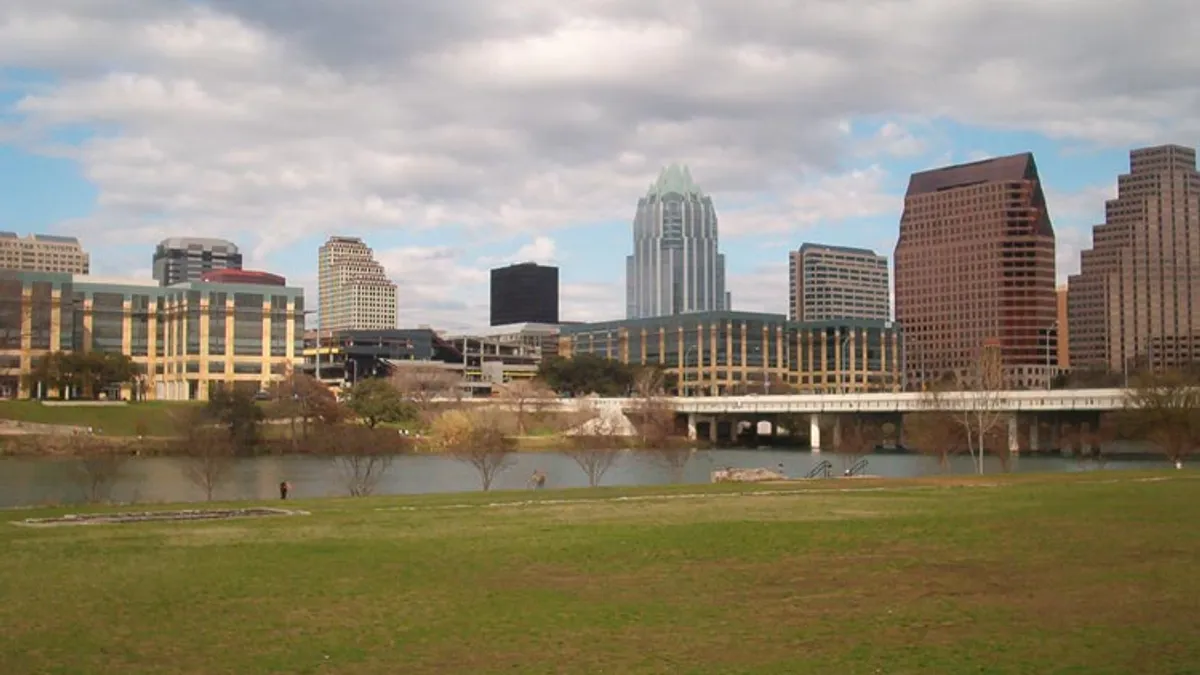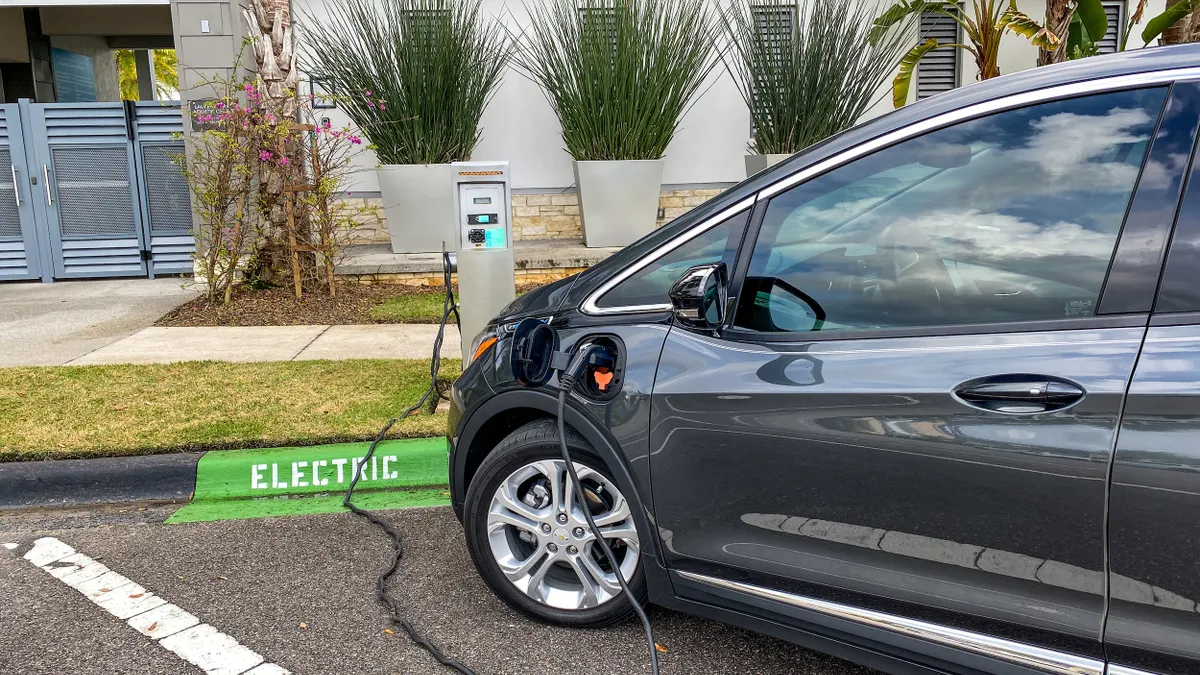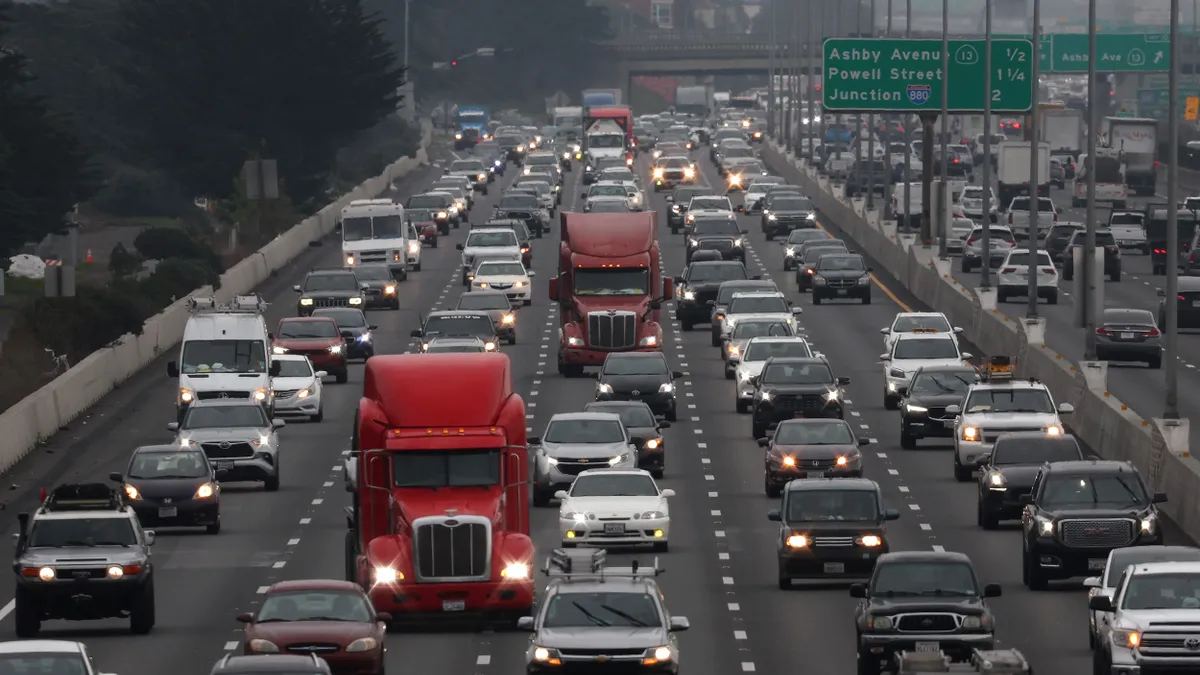The city of Austin, TX welcomed a new employee to its transportation department on Feb. 12, as Jason JonMichael started work as the city’s assistant director for smart mobility.
JonMichael is a 25-year veteran of transportation technology, having previously worked for transportation consultants HNTB Corporation on how to leverage emerging technology for connected and autonomous vehicles. He also spent time with telecommunications company Siemens and has worked in the private sector to help local government with transportation projects and Austin's Smart Cities Challenge.
JonMichael said the role, newly created in Austin’s city government, will focus on autonomous, electric and shared vehicles, as well as leveraging innovations in the private sector and helping government officials understand how to make that technology fit into the community and existing infrastructure.
"This new position signals Austin’s commitment to leadership in demonstrating and deploying emerging mobility solutions in our region," Robert Spillar, director of Austin Transportation, said in a statement.
JonMichael spoke to Smart Cities Dive about his new role, how transit is changing in the city and how he will work to get the various private transportation companies working alongside the existing public companies. He also shared his insights for other municipal governments who are looking to create a similar position in their own transportation departments and touched on several current and future transportation projects in the city.
The following interview has been edited for clarity and brevity.
SMART CITIES DIVE: What will the role involve, and why did you take the job in Austin?
JASON JONMICHAEL: We find ourselves in a unique time. Connected, autonomous, shared, ride-share services: the technology space in transportation is ripe for disruption and you can see it happening in many different forms today. Cities are grappling with how we take advantage of this rise in attention to our problems. These problems have been age-old problems, but with technology, there’s this renewed sense that we may be able to innovate out of some of the challenges that we have.
Cities have been grappling with understanding what the solutions are out there and how to best utilize and capitalize on those very rich technical solutions that are available. The problem is that in the private sector, the innovation is happening at a blistering rate, and only in the private sector are you able to get in and learn and understand that technology. There’s a gap in the civic side, in the public-sector side, related to subject matter expertise in this area.
My job in this is twofold. No. 1: connected, shared, autonomous and electric touches all parts of our transportation network, but a lot of times in civic planning the one area that it touches the most is land use and parking. Name any city, and parking revenues from their city-owned garages and spaces is a predominant share of their transportation budget.
Autonomous vehicles, at least the current extrapolation of what their perceived impacts could be, could significantly disrupt any type of parking facility in town. If you’re in an autonomous vehicle and it’s just dropping you off and going out to serve someone else or even serve a different part of the city, we don’t need all that parking downtown…There’s a lot of hard questions that are being asked of city leaders on simple things …There’s a lot of challenges and a lot of need, and at least here in Austin we’re organizing ourselves to be able to respond to that need.
"We need to get out of our own box and quit drinking our own Kool-Aid and look at different ways to attack the mobility problem from an equitable perspective..."

What does "smart mobility" mean specifically for Austin?
JONMICHAEL: I see it as an "all modes, all roads" type of scenario. We need to get out of our own box and quit drinking our own Kool-Aid and look at different ways to attack the mobility problem from an equitable perspective, and not look at it in the traditional methods of origin, destination and use of freeways. But look at how people move around, understand what their existing challenges are and then based off those scenarios innovate to find solutions to those.
I use an example of what I would think to be a use case for an individual in Austin or any smart city in the future. That would be for them to plan for, pay and then execute with connection protection a multimodal trip regardless of technology.
If an elderly person needs to get to the grocery store, they may take certain modes to get to the grocery store but if she bought ice cream then she may have to have a different set of modes and stack those together to get home. Or if you’re going to do travel demand management and have people car pool into town in the morning, you’ve got to answer the question of, OK, when someone’s child is sick and they get the call from school that need to go and pick them up and they car pooled in, how do I get them back out there to their community? These are the challenges that we hope to solve.
How will you collaborate with both private companies and public transit agencies so everyone works together rather than against each other?
JONMICHAEL: Therein lies the challenge: finding the culture of a place where all the agencies are willing to work together, and then at some point in time that looks attractive to the private sector. They don’t like going around and having to do things two or three times or having to go and visit everybody. They would much prefer to come to some body or a group of people and say, "These are our problems and we’re looking for solutions to solve those problems." My job is a cross-cutting job, both inside the Austin Transportation Department, inside the City of Austin, inside the region of Austin when we look at working with our other transportation partners, whether it be transit or toll or DOT and the counties.
And then even more so, a cross-cutting effort among more of a general goal set across the private sector. The nice thing is, I don’t have to do all that myself. After the Smart Cities Challenge, we launched a consortium of smart cities called the Texas Innovation Alliance (TIA) …Through the TIA, that’s how we’re going to evangelize in a more regional and even statewide level what some of our problem statements are, so that we can engage the private sector to help solve those.
How will you leverage existing transportation P3s? Are there any exciting P3s on the horizon?
JONMICHAEL: It is a major tenet of the program I am creating here at the city. We are creating a program office at the city for smart mobility, which will handle the partnerships as well as the implementation of whatever projects come out of those partnerships. Ultimately, operations and management and data sharing of that with our regional partners, the TIA and even nationally. There’s ways for the City of Austin to take what we learn and develop and iterate here and share it with the rest of the nation so we can all learn from it
"The resurgence of downtown America has brought about a level of mobility challenges that we haven’t seen before."

Austin recently unveiled a Corridor Construction Program under the Smart Corridor Plan. What are you most excited about with the development of smart corridors?
JONMICHAEL: In the light and the culture of that plan, it’s about re-looking at the way we plan for, design and then operate major corridors within our city. Every city has these issues, and it’s a challenge. You’ve got pulls from different areas. You want to have mobility, but at the same time businesses want the ability to make sure they’re capturing the customers they need to. The resurgence of downtown America has brought about a level of mobility challenges that we haven’t seen before. ...We have the ability to look at a corridor from the perspective of what we want it to look like in the future and not have to carry forward some of the constraints that we had in trying to innovate in the existing corridor the way it was coded and constructed.
Austin has expressed interest in expanding its fleet of city-owned electric vehicles (EV). How will your expertise in EVs help the city to pursue this?
JONMICHAEL: My area of expertise in electric vehicles is centered around program development and how we bring about more electric vehicles into the city, both privately-owned and operated as well as the city fleets and our partners and their fleets as well. In addition to that, I think there’s opportunities with other funding mechanisms to help supplant or incentivize more use of electric vehicles. It is definitely one of the major poles in the tent.
I see an autonomous function, and if it’s truly autonomous that car is connected to other cars and the infrastructure. So when I say autonomous, I mean a connected autonomous vehicle. Shared, because in that type of environment I think more shared use of mobility is key to seeing the marketplace thrive. And finally, electric, and electric is almost a given, but I want to make sure it’s out there so we don’t forget about it.
We have a very good partner in Austin Energy. Austin is really set up to take on the fast-charging type of solutions and the energy infrastructure, the power infrastructure we have in the city, we have our challenges like in any city, but I think we are set up for success in that area. Both in the way Austin Energy runs and how it’s set up with our transportation department.
What advice do you have to local governments who might consider a similar role, or transportation professionals who might want to get into it?
JONMICHAEL: I’ve had two opportunities before this one to come over to the public sector. I started my life and career in the private sector, and that afforded me the ability to learn at an accelerated rate. But I’ve always had a calling back to the public sector; it just wasn't the right time and my family demands that I had at the time. It took me a while this time around to truly understand that if your heart is in the right place, then all the other stuff works itself out.
It took me 25 years to figure that out, but I’m very glad to be here and I’m very glad Rob Spiller and the City of Austin all the way up to Mayor [Steve] Adler, there’s a level of leadership and culture that was such that it was enough to attract me over. I think there is plenty of opportunity for private sector subject matter experts like myself to come in and be a focal figure in the change. The gap in the public sector is widening as technology continues to innovate and Moore’s Law continues to hold true, the public sector is having a hard time keeping up with the level of innovation and how fast things are moving.
There is a lot of good technical innovation in crypto that could have a lot of extensibility into mobility payments, but there is no one in the public sector that I’ve found yet that understands decentralized computing enough — blockchain — to figure out how we can use this. Right now, if you want to take three different modes of transportation you might have to use four or five different apps to do that, and there’s a better way to do that and a better way that would bring about a level of simplicity for the user.
At the end of the day, that’s what we’re trying to do. We’re trying to make it easy for regular people to get around the city. I think there’s plenty of opportunity for people in the private sector to do what I’ve done.




















